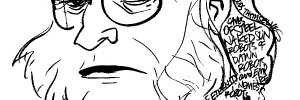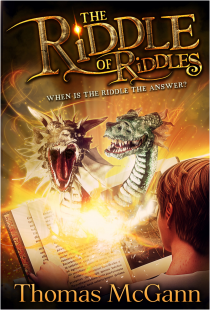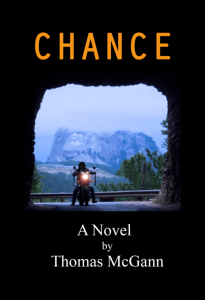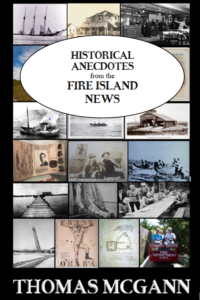Smashwords vs. Draft2Digital is a dilemma facing authors who have already published their works with Amazon, both as an eBook with Kindle, and as a paperback with CreateSpace. Both Smashwords (SW) and Draft2Digital (D2D) are book publishing and distribution platforms that supply major markets not covered by Amazon, namely, Barnes & Noble, Apple, and Kobo. Smashwords is the larger of the two, offering a wider range of distribution options. It publishes in EPUB, Mobi, PDF, LRF, and PDB, as well as other lesser known formats. This makes your book available on B&N Nook, Sony Reader, Apple iBoostore/iTunes, Kobo, Scribd, and… Read more »
Posts By: tmcgann
Once the editing is complete, let it be.
Once the editing is complete, let it be. – if you can. Mistakes are like gremlins. They love to show up just to wreak havoc regardless of all attempts to keep them out. ♪Mistakes? ♪I’ve made a few, and then again a few need to be mentioned♪ After receiving my paperback proof, I found several proofreading mistakes that I had overlooked while reading my manuscript off the computer screen. As mentioned in the previous blog post, we read our works so many times we get word blinded, and are no longer able to see even obvious errors. So, it… Read more »
My book galley is here! My book galley is here!
My book galley is here! My book galley is here! I cannot tell you how exciting it was to receive the hard brown cardboard box containing my paperback book galley. I was expecting it, of course, but it came two days late, and I was chomping at the bit waiting for it to arrive. The packaging was great. A simple pull-tab released the proof into my waiting hands, and there it was. There is was? No! Here it is! My first book, only a proof, a galley, but a book I could hold in my hands nonetheless. It felt wonderful. I… Read more »
Uploading manuscripts onto CreateSpace
Although uploading manuscripts onto CreateSpace (CS) are major steps in the process of publishing paperbacks, the process is relatively simple. Convert the manuscript to PDF and then just upload it. In the last blog, I described my battle with poltergeists, and while I was eventually able to banish them, I was left with a couple of hiccups. Two minor issues remained – the hiccups – embedded fonts and image resolution. After uploading my manuscript, I launched the CS Interior Reviewer to view the results. The font that I had embedded was registering as not embedded, and the resolutions of images… Read more »
Do poltergeists inhabit MS Word?
Do poltergeists inhabit MS Word? I swear they must. Let me explain. Last week, Roxanne Smolen bailed me out with her blog about formatting a paperback for CreateSpace (CS) and I was left with the simple task of converting my manuscript to PDF and uploading it on CS. Easy peasy, right? Wrong. Following instructions from various sources, I had divided the manuscript into three parts. For numbering the front matter, I chose to use small roman numerals as page numbers, to differentiate it from the main body text. I numbered the body text with the usual Arabic numbers starting with… Read more »
Formatting your manuscript for paperback publication – Part II
This post is Part II in the continuation of the steps necessary for formatting your manuscript for paperback publication. After posting here last week, I ran into what seemed to be insoluble problems, serious enough that I began questioning my ability to ever solve them. With the timely intervention of another writer, I was able to solve those problems. Talk about serendipity! But, more about that in a bit. First, a brief recount of where we left off. Last week we began by dividing the ms into three parts, the front matter, the body file, and the back matter so that we… Read more »
Formatting your manuscript for paperback publication – Part I
Formatting your manuscript for paperback publication with CreateSpace (CS) is a completely different project from formatting it for Kindle Direct Publishing (KDP). This is Part I. Additional information to follow. You can save yourself a lot of work by approaching paperback publication correctly. I tackled both projects without much forethought and it created a ton of extra work for me. I just sat down and started typing my manuscript. I should have formatted MS Word first before I typed a single letter. This would have saved me hours of work later in reformatting the manuscript to get it correct. In addition, I formatted my… Read more »
On Creativity

Approximately two weeks ago, Arthur Obermayer, a friend of Isaac Asimov, published an essay by Asimov entitled On Creativity. The essay, as described by Obermayer, was in response to an invitation Asimov had received to participate in a government think-tank concerning nuclear weapons. Isaac Asimov, besides being a prolific writer, had a PhD in biochemistry, was a professor at Boston University, a member of Mensa, and was widely considered one of the intellectuals of his time. As the author of hundreds of books, mostly science fiction, he came to realized early on that the secrecy of the think-tank might interfere… Read more »
Piracy is never romantic, Jack Sparrow be damned
Piracy, banditry, or any other self-serving tag line you want to apply to thieves in the act of burglarizing intellectual property (IP) is never romantic, or audacious, or heroic, Jack Sparrow with his bandanna, earrings and self-effacing grin be damned. Recently, Julie Andresen started a discussion on Google+ entitled “What are your thoughts on content piracy?” She got over thirty comments with opinions varying from “piracy is great,” to one advocating a personally administered penalty of “trans-anal evisceration.” Most of the heat came from a handful of the respondents, who purported to be listening but obviously were not hearing one another…. Read more »
To copyright or not to copyright, that is the question
To copyright or not to copyright, that is the question, but it should not be a question. To copyright is the only answer. My post, Book Titles, Fonts and Copyright Changes, created a heady discussion about copyright problems, international and domestic, to a degree I had not anticipated, one that requires a continuing dialogue. The Berne Convention of 1886 set forth basic international law regarding copyright, recognizing the copyrights of works of authors of all nations, in the same way that it recognizes the copyrights of its own citizens. It also required automatic, strong minimum standards while prohibiting mandatory registration…. Read more »





